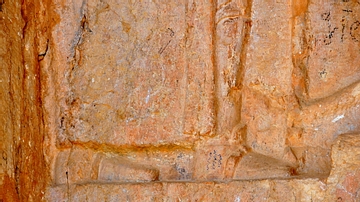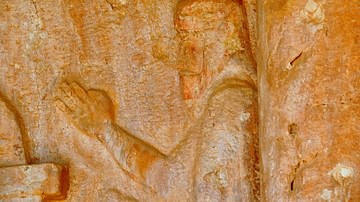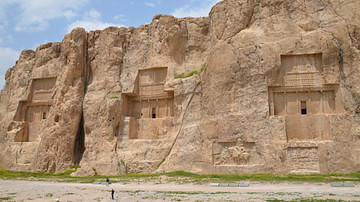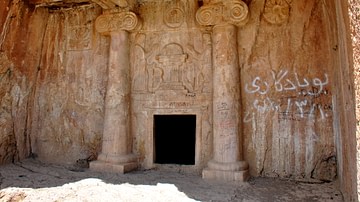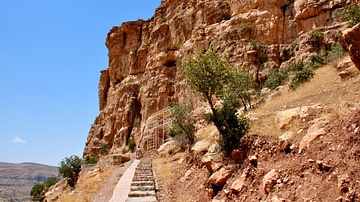Illustration
The rock-cut tombs of Ashkawt-i Qizqapan (Kurdish: The Cave of the Ravisher or the Cave of the Raped/Abducted Girl). The “cave” is carved into the cliff of the mountain and is approximately 8 meters above the ground level; it seems that the area below the cave was artificially smoothed out so that the access into the tombs becomes difficult. This photo dates to June 14, 1999, 3 years before the conservation/restoration work, which was done by the Directorate General of Antiquities of Sulaymaniyah. Note that the left half of the volute of the left capital is absent. At that time, the cave was not a destination for tourists and was inaccessible with no ladder. Median-Achaemenid Period, 600-330 BCE. Near Zarzi village and the Palaeolithic cave of Zarzi, Chemi Rezan Valley, Sulaymaniyah Governorate, Iraqi Kurdistan. Photo courtesy Hashim Hama Abdullah, director of the Sulaymaniyah Museum.
Cite This Work
APA Style
Museum, S. (2018, January 23). Cliff Face, Rock-Cut Tombs of Qizqapan. World History Encyclopedia. Retrieved from https://www.worldhistory.org/image/8006/cliff-face-rock-cut-tombs-of-qizqapan/
Chicago Style
Museum, Sulaymaniyah. "Cliff Face, Rock-Cut Tombs of Qizqapan." World History Encyclopedia. Last modified January 23, 2018. https://www.worldhistory.org/image/8006/cliff-face-rock-cut-tombs-of-qizqapan/.
MLA Style
Museum, Sulaymaniyah. "Cliff Face, Rock-Cut Tombs of Qizqapan." World History Encyclopedia. World History Encyclopedia, 23 Jan 2018. Web. 15 Apr 2025.


